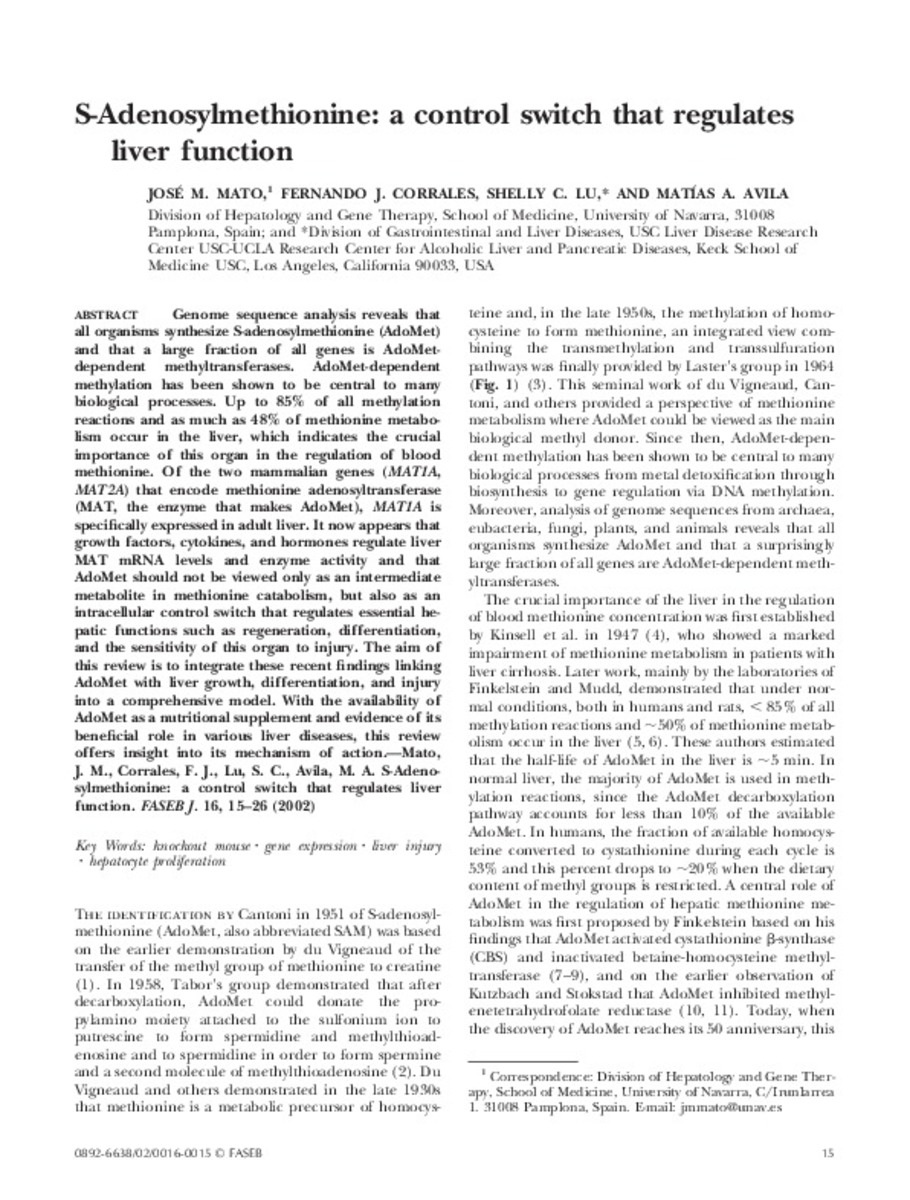S-Adenosylmethionine: a control switch that regulates liver function
Palabras clave :
Knockout mouse
Gene expression
Liver injury
Hepatocyte proliferation
Fecha de publicación :
2002
Editorial :
Federation of American Society of Experimental Biology
Cita:
Mato JM, Corrales FJ, Lu SC, Avila MA. S-Adenosylmethionine: a control switch that regulates liver function. FASEB J 2002 Jan;16(1):15-26.
Aparece en las colecciones:
Estadísticas e impacto
0 citas en

0 citas en

Los ítems de Dadun están protegidos por copyright, con todos los derechos reservados, a menos que se indique lo contrario.







